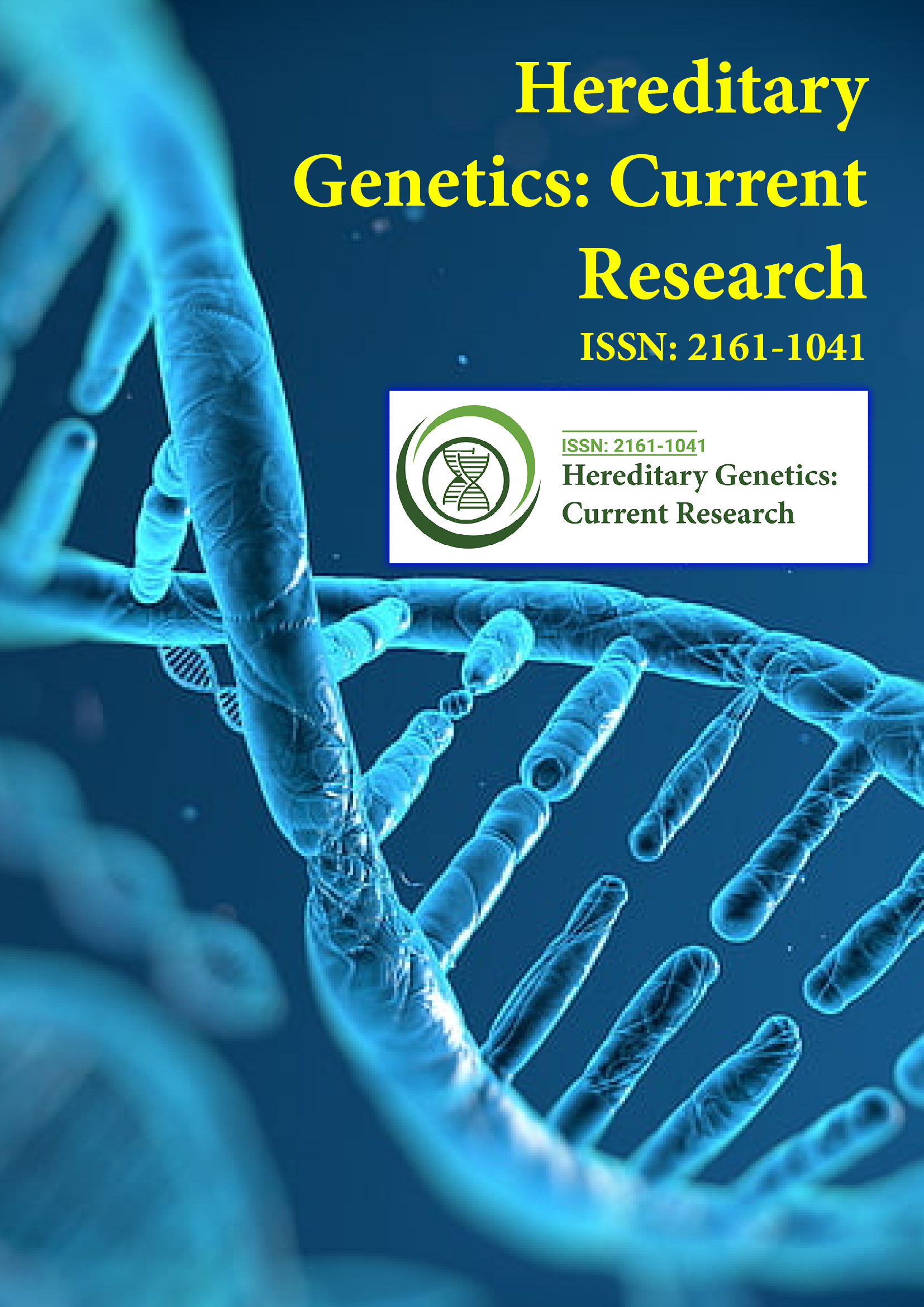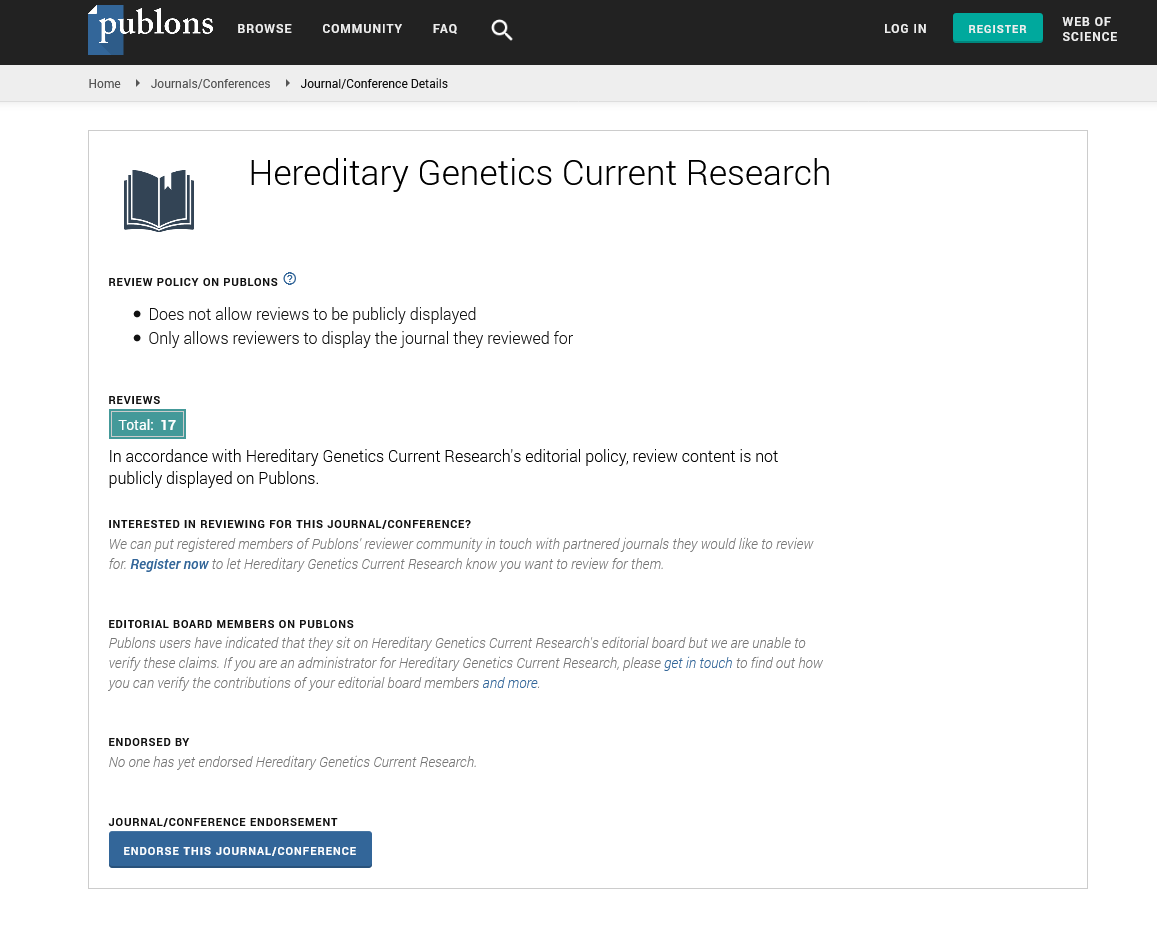Indexed In
- Open J Gate
- Genamics JournalSeek
- CiteFactor
- RefSeek
- Hamdard University
- EBSCO A-Z
- NSD - Norwegian Centre for Research Data
- OCLC- WorldCat
- Publons
- Geneva Foundation for Medical Education and Research
- Euro Pub
- Google Scholar
Useful Links
Share This Page
Journal Flyer

Open Access Journals
- Agri and Aquaculture
- Biochemistry
- Bioinformatics & Systems Biology
- Business & Management
- Chemistry
- Clinical Sciences
- Engineering
- Food & Nutrition
- General Science
- Genetics & Molecular Biology
- Immunology & Microbiology
- Medical Sciences
- Neuroscience & Psychology
- Nursing & Health Care
- Pharmaceutical Sciences
Short Communication - (2023) Volume 12, Issue 1
Treatment of Malignant Hematological Diseases using Chimeric Antigen Receptor (CAR) T-cell Therapy
Daniel Lawson*Received: 06-Mar-2023, Manuscript No. HGCR-23-19961; Editor assigned: 09-Mar-2023, Pre QC No. HGCR-23-19961 (PQ); Reviewed: 23-Mar-2023, QC No. HGCR-23-19961; Revised: 30-Mar-2023, Manuscript No. HGCR-23-19961 (R); Published: 06-Apr-2023, DOI: 10.35248/2161-1041.23.12.235
Description
Chimeric Antigen Receptors (CARs) are receptor proteins that have been engineered to provide T cells the ability to target a specific antigen. They are also known as chimeric immunoreceptors, chimeric T cell receptors, or artificial T cell receptors. Several forms of adoptive cell transfer treatments have been explored, but the one that has advanced the farthest in clinical research is known as Chimeric Antigen Receptor (CAR) T-cell therapy [1]. The receptors are chimeric in the sense that they integrate antigen-binding and T cell activation properties in a single receptor. To treat cancer, CAR T cell therapy employs T cells modified with CARs. The idea of CAR T immunotherapy is to alter T cells so that they can detect cancer cells and target and destroy them more efficiently. T cells are harvested from patients, genetically altered, and then infused back into patients to target malignancies. CAR T cells can be produced from T cells in a patient's own blood or from T cells in the blood of another, healthy donor. After being separated from a person, these T cells are genetically modified to express a particular CAR, which instructs them to target an antigen found on the surface of malignancies. To ensure safety, CAR T cells are developed to be selective to an antigen produced on tumour cells but not on healthy cells. After being put into a patient, CAR T cells work as a "living medicine" against cancer cells [2].
When CAR T cells come into touch with their specific antigen on a cell's surface, they attach to it, get activated, and then multiply and become cytotoxic. CAR T cells kill cells by a variety of ways, including extended accelerated cell proliferation, enhanced cytotoxicity to other live cells, and increased release of substances that can impact other cells, such as cytokines, interleukins, and growth factors. CAR T cells can have either CD4 or CD8 co-receptors on their surface [3]. These two cell types, known as CD4+ and CD8+, have distinct and interacting cytotoxic effects, and it appears that treatments that use a one-to- one ratio of the cell types have synergistic antitumor benefits. In Production of CAR T-Cells, T cells from human blood are isolated as the initial step in the creation of CAR T-cells. CAR T-cells can be created either from the patient's own blood or from the blood of a healthy donor. Purified T cells are then transduced with a retroviral vector encoding the designed CAR, often an integrating Gammaretrovirus (RV) or a Lentiviral (LV) vector. Because of a partial deletion of the U3 region, these vectors are highly safe in current times [4].
CRISPR/Cas9, a novel gene editing technology, was recently employed instead of retroviral vectors to integrate the CAR gene into specified places in the genome. Prior to the insertion of the engineered CAR T-cells, the patient receives lymphodepletion chemotherapy. The patient's circulating leukocyte count is reduced, which increases the quantity of cytokines generated and minimizes competition for resources, promoting the growth of the modified CAR T-cells. Clinical applications using CAR T cell therapy to treat hematologic malignancies were effective. Targeting CD19, a surface antigen expressed on precursor and mature B cells, can help cure B cell cancers such chronic lymphocytic leukemia and non-Hodgkin lymphoma [5]. Multiple myeloma is a lethal hematologic cancer of the plasma cells. It necessitates innovative treatment options, as present medications and regimens for multiple myeloma are not curative for the vast majority of patients. Although multiple myeloma cells do not regularly express detectable CD19, CAR T cell treatment may be used to target B cell progenitor cells. A successful trial employed CAR T cells as a survival therapy for individuals with multiple myeloma who had previously undergone treatment. After a year, the patients had no test evidence or clinical indications of malignancy, indicating that CAR T cell therapy might be a viable therapeutic option.
References
- Ghosh A, Mailankody S, Giralt SA, Landgren CO, Smith EL, Brentjens RJ. CAR T cell therapy for multiple myeloma: where are we now and where are we headed?. Leuk Lymphoma. 2018;59(9):2056-67.
[Crossref] [Google Scholar] [PubMed]
- Wang M, Munoz J, Goy A, Locke FL, Jacobson CA, Hill BT, et al.KTE-X19 CAR T-cell therapy in relapsed or refractory mantle-cell lymphoma. N Engl J Med. 2020;382(14):1331-1342.
[Crossref] [Google Scholar] [PubMed]
- Hu Y, Wang J, Wei G, Yu J, Luo Y, Shi J, et al. A retrospective comparison of allogenic and autologous chimeric antigen receptor T cell therapy targeting CD19 in patients with relapsed/refractory acute lymphoblastic leukemia. Bone Marrow Transplant. 2019;54(8):1208-1217.
[Crossref] [Google Scholar] [PubMed]
- Pan J, Tan Y, Wang G, Deng B, Ling Z, Song W, et al. Donor-Derived CD7 Chimeric Antigen Receptor T Cells for T-Cell Acute Lymphoblastic Leukemia: First-In-Human, Phase I Trial. J Clin Oncol (2021) 39(30):3340–51.
[Crossref] [Google Scholar] [PubMed]
- Haso W, Lee DW, Shah NN, Stetler-Stevenson M, Yuan CM, Pastan IH, et al. Anti-CD22–chimeric antigen receptors targeting B-cell precursor acute lymphoblastic leukemia. Blood. 2013;121(7):1165-1174.
[Crossref] [Google Scholar] [PubMed]
Citation: Lawson D (2023) Treatment of Malignant Hematological Diseases using Chimeric Antigen Receptor (CAR) T-cell Therapy. Hereditary Genet. 12:235.
Copyright: ©2023 Lawson D. This is an open-access article distributed under the terms of the Creative Commons Attribution License, which permits unrestricted use, distribution, and reproduction in any medium, provided the original author and source are credited.

